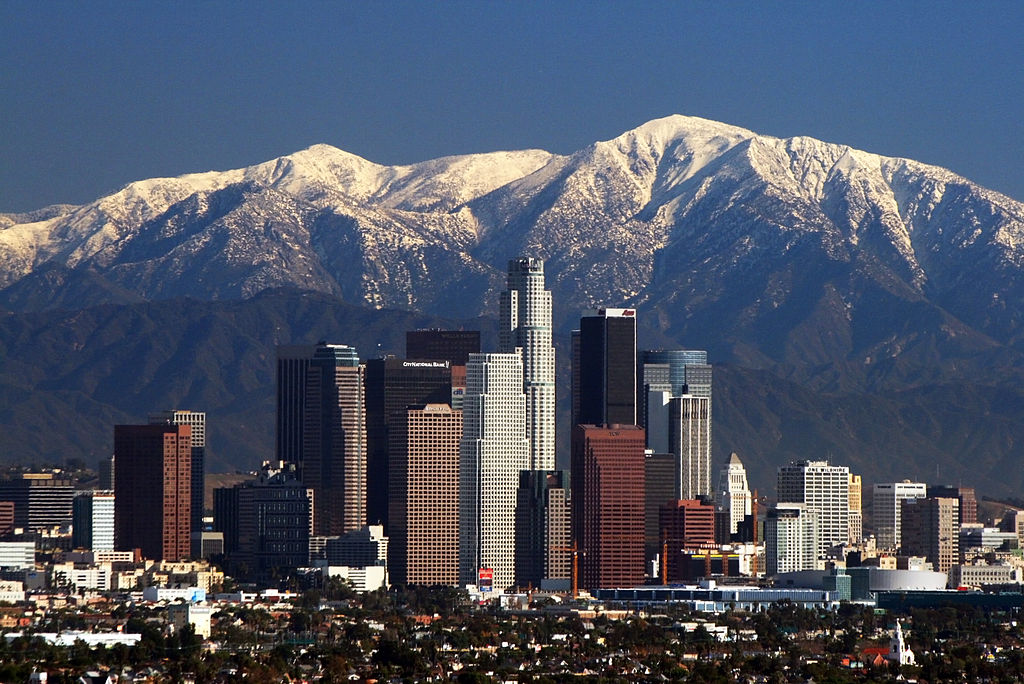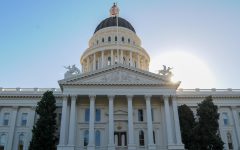
Montgomery St. and Skyline of Downtown areas of San Francisco, CA. (Photo: Randy Andy/ Shutterstock)
Charter City Elections in California
Council districts are to be geographically contiguous
By Chris Micheli, February 7, 2022 6:20 pm
California’s Elections Code provides a number of laws related to city elections in Charter Cities. These are contained in Division 21, Chapter 7, Article 2. Article 2 applies to a charter city that elects members of the city’s legislative body by districts or from districts.
Section 21621 provides that, following a city’s decision to elect its council using district-based elections, or following each federal decennial census for a city whose council is already elected using district-based elections, the council is required to, by ordinance or resolution, adopt boundaries for all of the council districts of the city so that the council districts are substantially equal in population as required by the United States Constitution.
The council is required to adopt council district boundaries that comply with the United States Constitution, the California Constitution, and the federal Voting Rights Act of 1965. In addition, the council must adopt district boundaries using the following criteria as set forth in the following order of priority:
- To the extent practicable, council districts are to be geographically contiguous.
- To the extent practicable, the geographic integrity of any local neighborhood or local community of interest are to be respected in a manner that minimizes its division.
- Council district boundaries should be easily identifiable and understandable by residents.
- To the extent practicable, and where it does not conflict with the preceding criteria, council districts are to be drawn to encourage geographical compactness in a manner that nearby areas of population are not bypassed in favor of more distant populations.
The council is prohibited from adopting council district boundaries for the purpose of favoring or discriminating against a political party.
Section 21622 provides that, for redistricting occurring in 2031 and thereafter, the boundaries of the council districts are to be adopted by the council not later than 205 days before the city’s next regular election occurring after January 1 in each year ending in the number two.
Section 21623 provides that, if the boundaries of a city expand by the addition of new territory, including through annexation of unincorporated territory or consolidation with another city, the council must add that new territory to the nearest existing council district without changing the boundaries of other council district boundaries.
Section 21625 provides that, after redistricting or districting, a council must not adopt new council district boundaries until after the next federal decennial census, except under the following circumstances:
This section does not prohibit a council from adopting council districts between federal decennial censuses if the council is adopting council districts for the first time, including when a city adopts council districts for the purpose of transitioning from electing its council members in at-large elections to elections by districts or from districts.
Section 21626 provides the term of office of any council member who has been elected and whose term of office has not expired cannot be affected by any change in the boundaries of the district from which the council member was elected.
Section 21627 states that, before adopting the boundaries of a council district, or for any other reason, the council is required to hold public hearings on the proposal. This section does not apply when a city transitions from at-large to district-based elections.
Section 21627.1 provides that, before adopting a final map, the council is required to hold at least four public hearings at which the public is invited to provide input regarding the composition of one or more council districts.
Section 21628 requires the council to take steps to encourage residents, including those in underrepresented communities and non-English speaking communities, to participate in the redistricting public review process.
A draft map must be published on the internet for at least seven days before being adopted as a final map by the council provided that, if there are fewer than 28 days until the deadline to adopt boundaries, the draft map may instead be published on the internet for at least three days. The council is required to allow the public to submit testimony or draft maps in writing and electronically.
The council must establish, and maintain for at least 10 years after the adoption of new council district boundaries, an internet web page dedicated to redistricting. The web page may be hosted on the city’s existing internet website or another internet website maintained by the city.
Section 21629 provides that, if the council does not adopt council district boundaries by the deadlines, the council must immediately petition the superior court in the county in which the city is located for an order adopting council district boundaries. If the council does not petition the superior court within five days after the deadline, any resident of the city may file that petition and is entitled to recover the resident’s reasonable attorney’s fees and costs from the city for doing so.
Section 21630 specifies that, if a council assigns the responsibility to recommend or to adopt new district boundaries to a hybrid or independent redistricting commission, the charter city remains subject to the redistricting deadlines, requirements, and restrictions that apply to the council under this article, unless otherwise exempted by law.
- Recent Legal Challenges to California Statutes - December 4, 2025
- Interpretation of International Commercial Disputes - December 4, 2025
- Volume of Daily Journal Letters Submitted by Bill Authors – 2025 Update - December 3, 2025





One thought on “Charter City Elections in California”